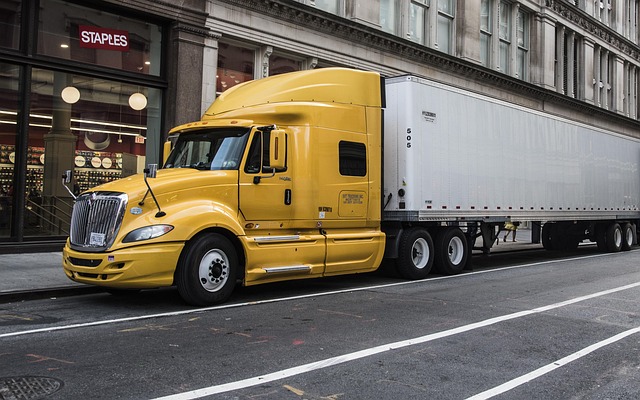Trucking cargo liability involves understanding various legal responsibilities for goods in transit, including natural disasters, cargo shifting, correct loading, securing freight, and regulatory compliance. Businesses should tailor insurance policies based on cargo nature, shipping routes, operational scope, regional regulations, and specific needs like hazardous materials or valuable goods. Compare coverage and exclusions to ensure policies align with unique requirements, enhancing security and streamlining operations in the freight industry.
Selecting the right insurance policy is a cornerstone of successful freight transportation. This article provides professional tips for navigating the complex landscape of trucking cargo liability, ensuring your business is protected against potential risks. We’ll guide you through understanding the basics of trucking cargo liability, assessing critical freight requirements, comparing policy coverage, and customizing policies to match unique needs. By following these strategies, you can mitigate risks and foster a more secure logistics operation.
Understanding Trucking Cargo Liability: The Basics

Trucking cargo liability refers to the legal responsibility of truck carriers for damages or losses incurred during the transportation of goods. It’s a critical aspect of freight shipping that every business owner should understand before selecting insurance policies. The basics involve recognizing different types of liability, such as non-negligent liability, which covers situations where the carrier is not at fault, like acts of nature or cargo shifting during transit.
Carriers must also be aware of their duty of care, which entails ensuring proper loading, securing freight, and adhering to regulations. Understanding these fundamentals is essential when choosing policies that align with specific freight requirements. This knowledge allows businesses to opt for coverage that adequately protects them from potential risks and financial losses associated with trucking cargo liability.
Assessing Your Freight Requirements: Key Factors to Consider

When assessing your freight requirements, several key factors come into play, crucial for aligning your policies with your needs. Firstly, understand the nature of your cargo: is it hazardous, requiring specialized handling and additional coverage? Or is it standard trucking cargo with liability considerations? The type and classification of your goods will dictate the level of insurance needed to protect against potential risks and losses.
Secondly, consider the shipping route and mode of transportation. Land-based trucking involves different risks compared to intermodal or air freight. Assess the geographical scope of your operations—are you operating locally, nationally, or internationally? Each region may have specific regulations and requirements for trucking cargo liability, impacting the policies you choose.
Comparing Policy Coverage and Exclusions

When selecting policies that match freight requirements, comparing policy coverage and exclusions is paramount. It’s crucial to understand what your insurance covers and what it doesn’t, especially in the high-risk trucking cargo liability sector. Policies can vary widely, so carefully review each one to ensure adequate protection for your goods and operations.
Focus on key areas like property damage, loss or theft, and liability for third-party claims. Check if the policy includes specific exclusions related to hazardous materials or unusual freight, which could have unique risk factors. Understanding these details allows you to make informed decisions, ensuring a policy that aligns with your trucking business’s specific cargo liability needs.
Strategies for Customizing Policies to Match Specific Needs

When it comes to freight transportation, every business has unique needs. That’s why customizing policies is essential for a seamless and secure logistics process. Start by assessing your specific requirements, such as the types of cargo carried, routes traveled, and safety considerations. For instance, if you’re dealing with hazardous materials or valuable trucking cargo liability, tailored insurance coverage is crucial.
Consider working closely with insurance providers to create policies that address these specific needs. This might involve adding specific clauses for different types of freight, increasing liability limits, or incorporating advanced tracking systems. The goal is to have a policy that not only meets but exceeds your freight requirements, ensuring peace of mind during transit and facilitating efficient operations in the dynamic world of trucking cargo liability.
When selecting policies that align with your freight requirements, it’s crucial to grasp the fundamentals of trucking cargo liability. By carefully assessing your specific needs and comparing policy details, you can customize coverage to match unique challenges. This strategic approach ensures that your business is shielded from potential risks, allowing for seamless operations in the dynamic world of trucking.
